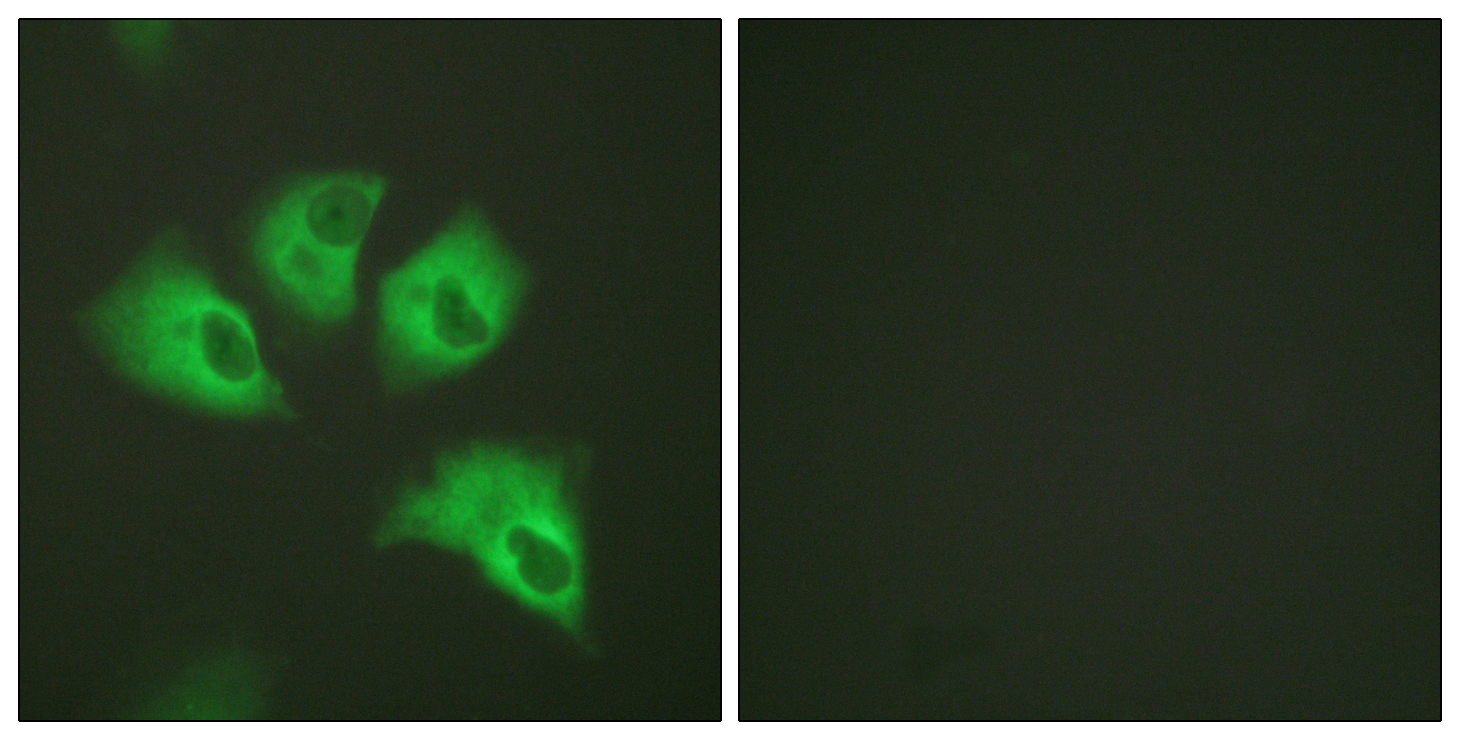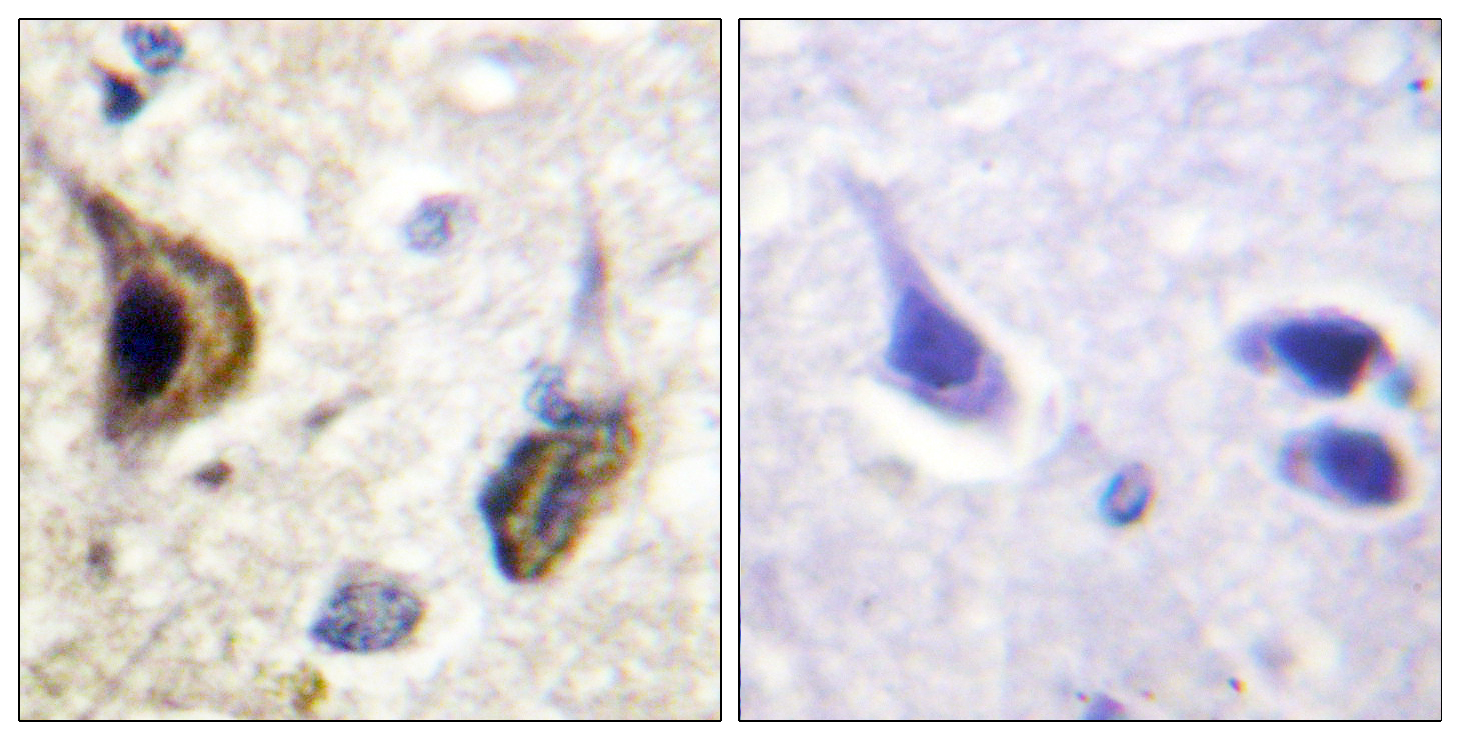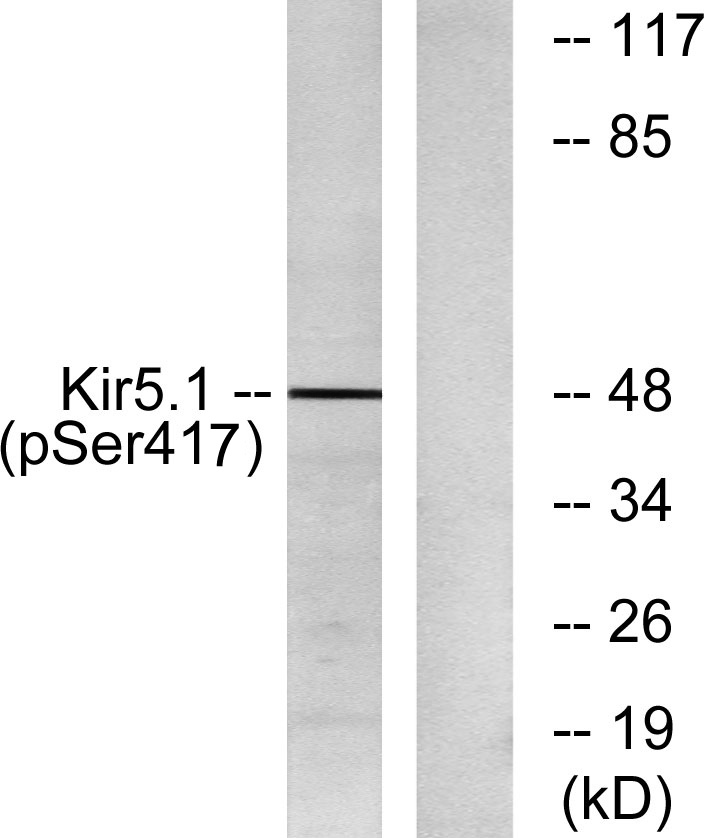KIR5.1 (phospho Ser416) Polyclonal Antibody
- 货号:YP0938
- 应用:WB;IHC;IF;ELISA
- 种属:Human;Mouse;Rat
- 靶点:
- KIR5.1
- 基因名称:
- KCNJ16
- 蛋白名称:
- Inward rectifier potassium channel 16
- Human Swiss Prot No:
- Q9NPI9
- Mouse Gene Id:
- 16517
- Rat Swiss Prot No:
- P52191
- 免疫原:
- The antiserum was produced against synthesized peptide derived from mouse Kir5.1 around the phosphorylation site of Ser417. AA range:369-418
- 特异性:
- Phospho-KIR5.1 (S416) Polyclonal Antibody detects endogenous levels of KIR5.1 protein only when phosphorylated at S416.
- 组成:
- Liquid in PBS containing 50% glycerol, 0.5% BSA and 0.02% sodium azide.
- 来源:
- Polyclonal, Rabbit,IgG
- 稀释:
- WB 1:500 - 1:2000. IHC 1:100 - 1:300. IF 1:200 - 1:1000. ELISA: 1:5000. Not yet tested in other applications.
- 纯化工艺:
- The antibody was affinity-purified from rabbit antiserum by affinity-chromatography using epitope-specific immunogen.
- 浓度:
- 1 mg/ml
- 储存:
- -15°C to -25°C/1 year(Do not lower than -25°C)
- 其他名称:
- KCNJ16;Inward rectifier potassium channel 16;Inward rectifier K(+) channel Kir5.1;Potassium channel; inwardly rectifying subfamily J member 16
- 实测条带:
- 48kD
- 背景:
- KCNJ16 (Potassium Voltage-Gated Channel Subfamily J Member 16) is a Protein Coding gene. Diseases associated with KCNJ16 include sesame syndrome and body dysmorphic disorder. Among its related pathways are Transmission across Chemical Synapses and Inwardly rectifying K+ channels. GO annotations related to this gene include inward rectifier potassium channel activity. An important paralog of this gene is KCNJ3. nward rectifier potassium channels are characterized by a greater tendency to allow potassium to flow into the cell rather than out of it. Their voltage dependence is regulated by the concentration of extracellular potassium; as external potassium is raised, the voltage range of the channel opening shifts to more positive voltages. The inward rectification is mainly due to the blockage of outward current by internal magnesium. KCNJ16 may be involved in the regulation of fluid and pH balance. In the kidney, together with KCNJ10, mediates basolateral K(+) recycling in distal tubules; this process is critical for Na(+) reabsorption at the tubules (PubMed: 24561201). he inward-rectifier potassium channel family (also known as 2-TM channels) include the strong inward-rectifier channels (Kir2. ), the G-protein-activated inward-rectifier channels (Kir3. ) and the ATP-sensitive channels (Kir6. ), which combine with sulphonylurea receptors.
- June 19-2018
- WESTERN IMMUNOBLOTTING PROTOCOL
- June 19-2018
- IMMUNOHISTOCHEMISTRY-PARAFFIN PROTOCOL
- June 19-2018
- IMMUNOFLUORESCENCE PROTOCOL
- September 08-2020
- FLOW-CYTOMEYRT-PROTOCOL
- May 20-2022
- Cell-Based ELISA│解您多样本WB检测之困扰
- July 13-2018
- CELL-BASED-ELISA-PROTOCOL-FOR-ACETYL-PROTEIN
- July 13-2018
- CELL-BASED-ELISA-PROTOCOL-FOR-PHOSPHO-PROTEIN
- July 13-2018
- Antibody-FAQs
- 产品图片

- Enzyme-Linked Immunosorbent Assay (Phospho-ELISA) for Immunogen Phosphopeptide (Phospho-left) and Non-Phosphopeptide (Phospho-right), using Kir5.1 (Phospho-Ser417) Antibody

- Immunofluorescence analysis of HeLa cells, using Kir5.1 (Phospho-Ser417) Antibody. The picture on the right is blocked with the phospho peptide.

- Immunohistochemistry analysis of paraffin-embedded human brain, using Kir5.1 (Phospho-Ser417) Antibody. The picture on the right is blocked with the phospho peptide.

- Western blot analysis of lysates from RAW264.7 cells treated with forskolin 40nM 30', using Kir5.1 (Phospho-Ser417) Antibody. The lane on the right is blocked with the phospho peptide.



